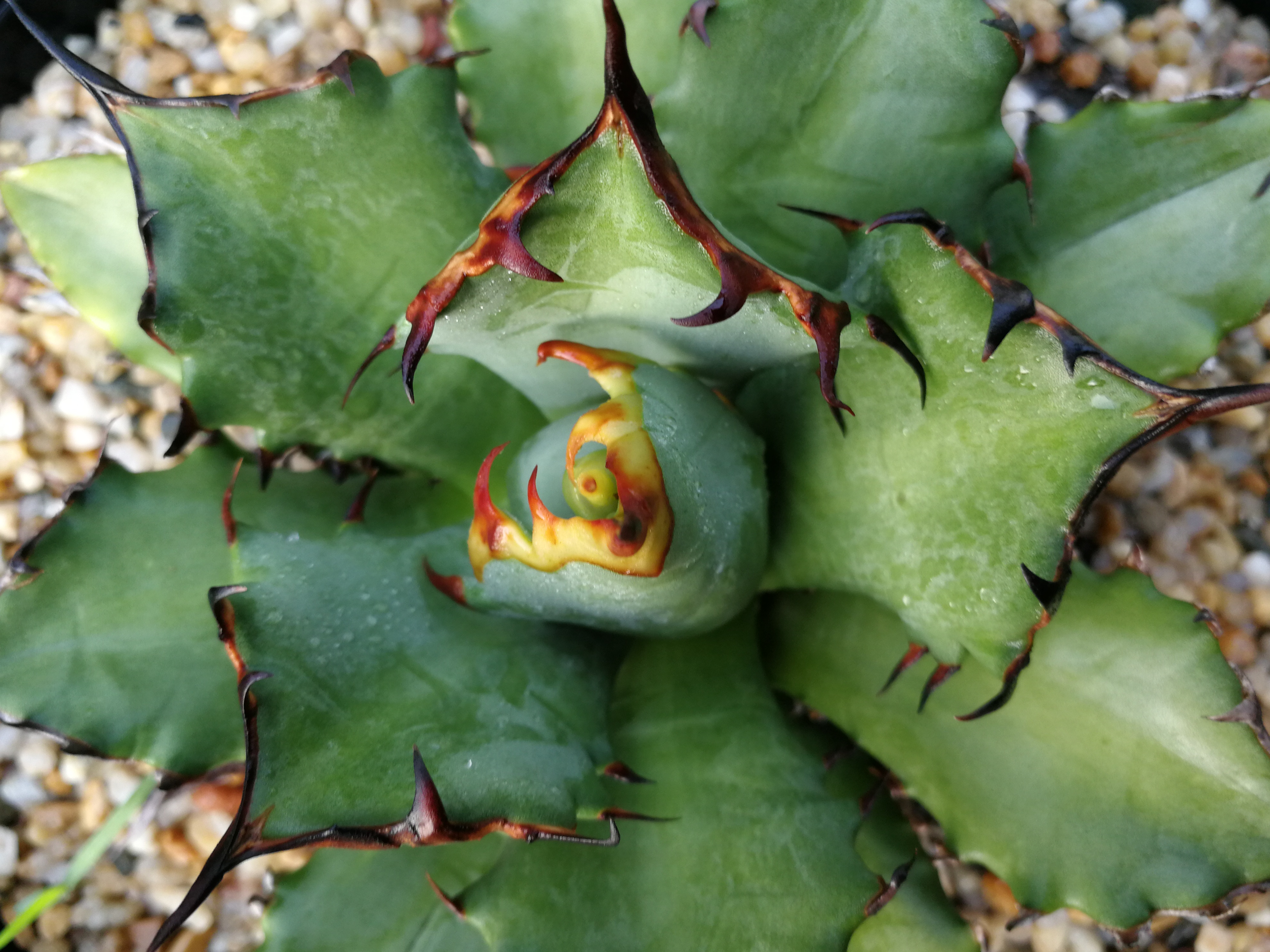Chalk Agave
(Agave titanota)

Description
Agave titanota, the chalk agave, is a species of flowering plant in the family Asparagaceae. It is a medium-sized evergreen succulent perennial native to Oaxaca, Mexico. It often reaches 1-2 feet tall and 2-3 feet wide. The plant forms a solitary rosette of broad whitish green leaves with variable spines, which are 1-2 feet long and 5 inches wide, typically narrower toward the base and widest near the tip. Occasionally, it produces offsets. Mature plants may produce a flower head from 3m to 6m tall with yellow flowers. As it is monocarpic, this signals the death of the plant. It can tolerate temperatures of −3 °C (27 °F), but in practice is best grown in a sheltered spot without severe frosts. It has gained the Royal Horticultural Society’s Award of Garden Merit. This plant is suitable for USDA hardiness zones 9-11. It may be susceptible to scale insects and chlorosis resulting from magnesium deficiency. Cultivars include 'White Ice', 'Filigree', and 'Solar Eclipse. Agave is a genus of monocots native to the hot and arid regions of the Americas, although some Agave species are also native to tropical areas of South America. The genus Agave (from the Ancient Greek αγαυή, agauê) is primarily known for its succulent and xerophytic species that typically form large rosettes of strong, fleshy leaves. Agave now includes species formerly placed in a number of other genera, such as Manfreda, ×Mangave, Polianthes and Prochnyanthes. Many plants in this genus may be considered perennial, because they require several to many years to mature and flower. However, most Agave species are more accurately described as monocarpic rosettes or multiannuals, since each individual rosette flowers only once and then dies; a small number of Agave species are polycarpic. Maguey flowers are considered edible in many indigenous culinary traditions of Mesoamerica. Along with plants from the closely related genera Yucca, Hesperoyucca, and Hesperaloe, various Agave species are popular ornamental plants in hot, dry climates, as they require very little supplemental water to survive. Most Agave species grow very slowly. Some Agave species are known by the common name "century plant". The succulent leaves of most Agave species have sharp marginal teeth, an extremely sharp terminal spine, and are very fibrous inside. The stout stem is usually extremely short, which may make the plant appear as though it is stemless.
Taxonomic tree:







